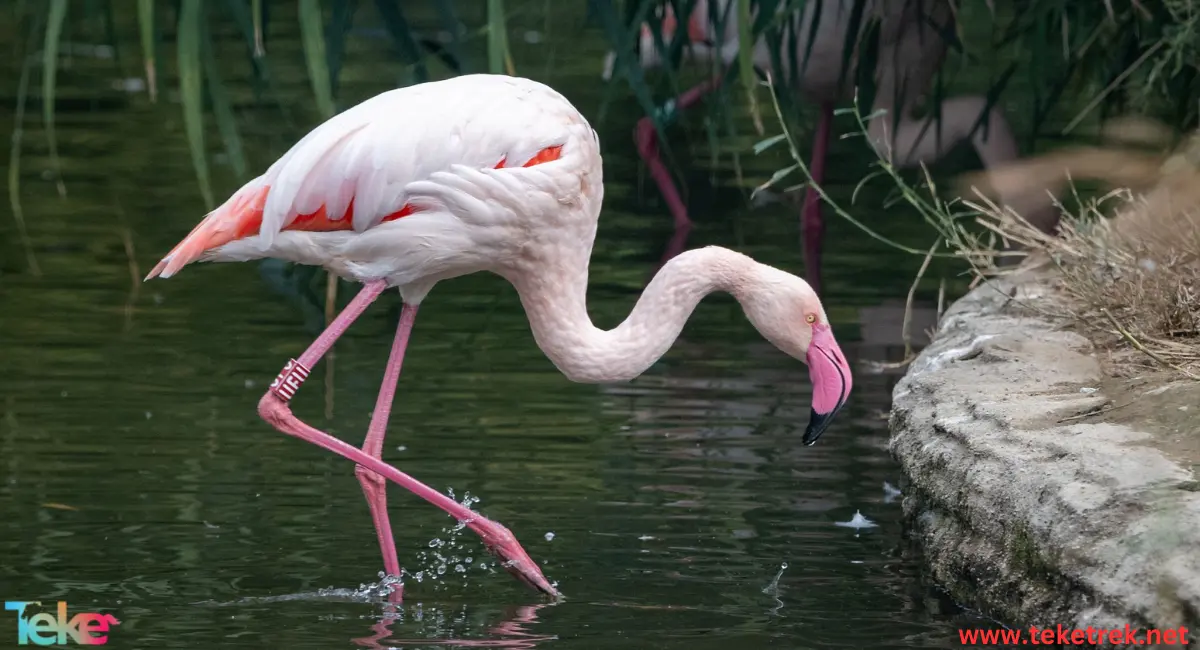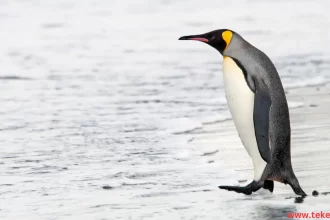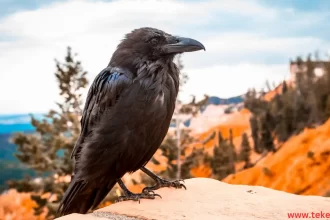The flamingo bird is water bird distinguished by its vibrant pink feathers and long legs. It is considered one of the most attractive and fascinating birds in the animal kingdom. Flamingos can be found in various regions around the world, and multiple species of flamingos differ in size and habitats.
These birds are known for their vivid colors and their ability to stand on one leg. They also have long necks that they use to search for food in shallow waters.
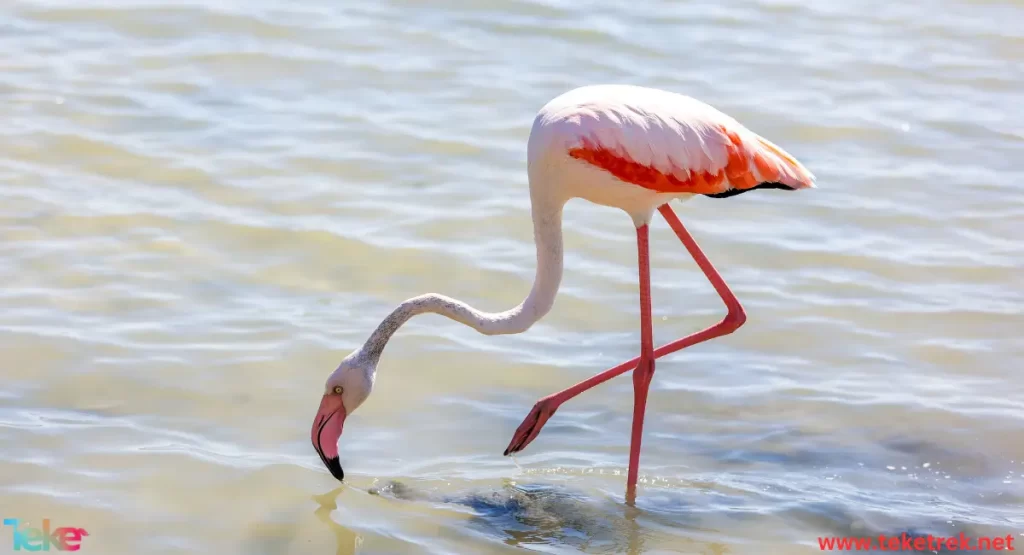
The most important specifications of the flamingo bird
The flamingo bird is characterized by feathers that range in shades of pink, red, and orange, creating a bright and eye-catching color palette, in addition to that:
- With its long and slender neck, the flamingo uses it to search for food in shallow waters.
- The bird possesses two long and thin legs that aid in standing and walking on shallow waters, allowing it to reach its food. The legs also provide stability while standing on wet mud.
- Featuring a curved beak, the flamingo utilizes it to search for food in the water. The beak can be opened by lifting the upper jaw and lowering the lower jaw.
- Despite its elegant appearance, the flamingo has a relatively large size that reflects its beauty and strength in flying and foraging for food.
- The length varies among flamingo species. Generally, their length can range from approximately 1.2 to 1.4 meters from head to tail. The Greater Flamingo is considered one of the largest species and may have a slightly longer length than others.
- The weight usually falls between 2-4 kilograms.
Why is the flamingo pink?
The flamingo’s pink color comes from its diet, which consists of algae and brine shrimp rich in carotenoids, compounds that give it this vibrant hue, in addition to that:
- When the flamingo consumes these carotenoid-rich algae, liver enzymes break them down to produce pigments. The body absorbs these compounds, and carotenoids give the flamingo its distinctive pink color. The greater the amount of carotenoids consumed, the deeper and more vibrant the pink color becomes, enhancing its brightness and beauty.
- A healthy and well-nourished flamingo exhibits more vibrant colors, making it more attractive for mating. In contrast, a white or light-colored flamingo is usually considered a sign of poor health or malnutrition. However, in controlled environments such as gardens and aviaries, even if a flamingo is well-nourished, it may lack the natural pink color if sufficient carotenoids are not provided at levels similar to those found in nature.
The reason why the flamingo was given this name
The bird derives its name from the Spanish word “flamenco,” translating to “flame,” owing to the vibrant and bright color of its feathers. This choice is attributed to the flamingo’s distinct pink plumage, creating the illusion of being aflame with the hues of fire.
Which country has flamingos?
A water bird inhabiting various regions worldwide, including Africa, Southern Europe, South Asia, and South America, and preferring marshes and shallow saline environments.
What flamingo eat?
They consider algae, microorganisms, and small insects present in the water as their essential food. They use their curved beaks to consume algae and mollusks. Some species may also consume small shrimp or invertebrates while feeding.
Their specialized beaks are designed to separate mud from their food and are used in a unique and inverted manner. They have sensory structures that aid in filtering food, known as lamellae covering their jaws, and a large, rough-surfaced tongue.
Flamingo reproduction
The process of reproduction depends on their environment and the surrounding conditions, with varying methods of reproduction among different species, where:
- They typically build their nests on mud hills or in wet sandy areas within aquatic environments.
- The female usually lays one egg in the nest, and both parents share the responsibility of caring for and feeding the chick. They feed the chick with a secretion called “crop milk,” produced in glands along their upper digestive tract. This milk provides fats and proteins crucial for the young ones and serves as an important food source for them.
- The incubation period usually lasts around 28 to 32 days.
- Regarding sexual maturity, flamingos can begin reproducing at around 6 years of age, although in some cases, it might be slightly longer, starting at 8-10 years. This period depends on environmental and nutritional conditions that influence the growth and maturity of these birds.
Why does a flamingo stand on one leg?
Like other water birds, standing on one leg serves several purposes for flamingos during rest or sleep:
1- Heat conservation: Some believe that the one-legged stance helps reduce heat loss, especially in cold waters. Having one leg under the body minimizes the surface area in contact with the cold water.
2- Balance: For tall birds with long and heavy legs, standing on one leg can provide better balance, especially during rest.
3- Comfortable sleep: Flamingos can sleep while standing on one leg for extended periods without feeling fatigued. This position aids in relaxing their muscles without the need for falling.
4- Quick escape ability: The one-legged stance allows them to quickly prepare for flight or escape in case of danger.
The strangeness of the flamingo
It is a captivating and peculiar bird in various ways. Here are some intriguing and exciting facts about it:
1- Vibrant Feather Color:
Its vibrant feathers, ranging from pink to red, distinguish it, making it attractive and alluring.
2- Unusual Feeding Method:
It flips its head upside down, utilizing its curved beak to filter water and search for food.
3- Unique Reproduction:
It constructs nests on mud hills and lays its eggs inside.
4- Amazing Flight:
Despite its seemingly large and heavy appearance, the flamingo can fly swiftly and elegantly.
5- Highly Social:
Often living in massive groups called “colonies” or “flocks,” which can consist of thousands of birds.
6- Seductive Long Legs:
Its long legs assist in standing in shallow water and searching for food.
7- Golden White Plumage in Juveniles:
Young flamingos possess golden-white plumage that gradually transitions to a vibrant pink color as they mature.
Species of flamingo
Finally, there are six species of flamingos:
1. Greater Flamingo (Phoenicopterus roseus):
Living in the Old World, distributed in parts of Africa, Southern Europe, and Southwest Asia, it is the most widespread among flamingos.
2. Lesser Flamingo (Phoeniconaias minor):
Found in Africa, such as the Great Rift Valley, extending to Northwestern India, it is the most widespread in terms of numbers.
3. Chilean Flamingo (Phoenicopterus chilensis):
Present in the New World, it inhabits temperate South America.

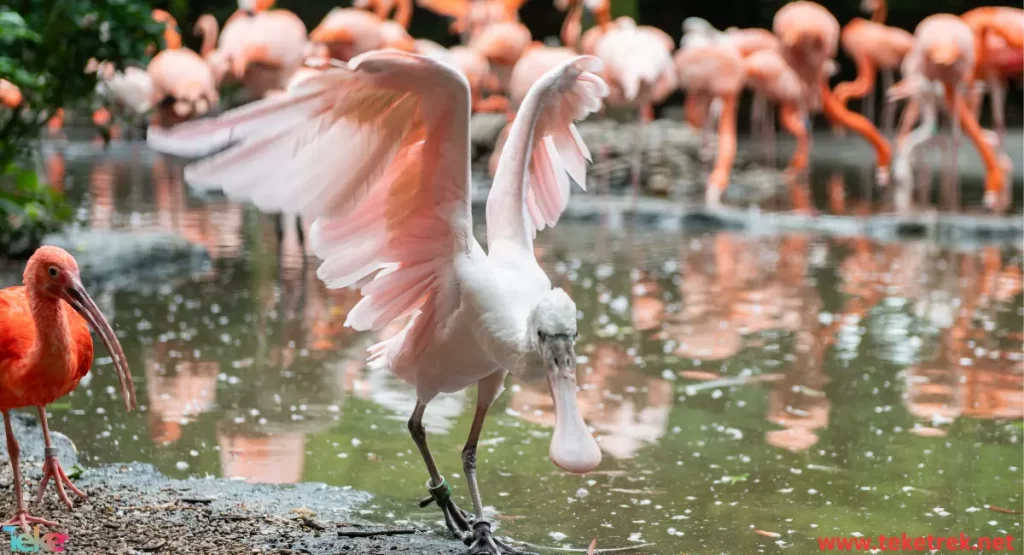
4. James’s Flamingo (Phoenicoparrus jamesi):
Lives in the Andes Mountains in Peru, Chile, Bolivia, and Argentina.
5. Andean Flamingo (Phoenicoparrus andinus):
Also found in the Andes Mountains in Peru, Chile, Bolivia, and Argentina.
6. American Flamingo (Phoenicopterus ruber):
Inhabits the Caribbean islands, Caribbean Mexico, South Florida, Belize, Colombian coasts, northern Brazil, Venezuela, and the Galápagos Islands.

